Threat Identification in Low Light Shootings
Threat Identification in Low Light Shootings
Two Louisiana police officers were called murderers after they killed a young, unarmed man one night by repeatedly shooting him in the back. The officers claimed the man was armed, but no gun was ever found.
In the aftermath, the police chief was fired, the officers were dragged through the legal system and the community lost faith in the police force.
What went wrong?
Mistake-Of-Fact Shootings
A mistake-of-fact shooting can be described as a shooting where the officer reasonably, but inaccurately, believed the suspect was armed and posed an imminent threat.
In recent years, police departments have started putting more training emphasis on shooting in low light situations. Not nearly enough training is being done, but at least it is a move in the right direction.
However, very little training has ever been provided to police officers on how to identify threats in low light conditions. The prevailing thought is “you’ll know it when you see it.” But what if we can’t see it?
If it was so simple as knowing it when you see it, then why do we have so many mistake-of-fact shootings? Consider this:
- The ACLU has previously reported that about 25% of all police shootings were of unarmed people.
- A study of Los Angeles County officer involved shootings (OIS) from 1998 − 2002 showed that 18% were likely mistake-of-fact shootings. About 75% of these were in low light situations.
- Career law enforcement officer and researcher Tom Aveni studied OIS statistics from departments around the United States and found that mistake-of-fact shootings ranged from 18%-33%
The Eye and the Dark
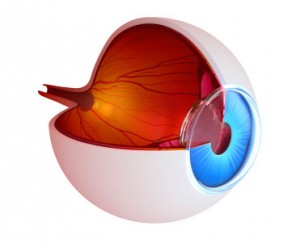 The human eye is an amazing thing. It has two different sensors that convert light energy into images we use to see. Cones help us to see in well lit areas and rods help us to see during diminished light conditions, yet rods and cones are good at different things.
The human eye is an amazing thing. It has two different sensors that convert light energy into images we use to see. Cones help us to see in well lit areas and rods help us to see during diminished light conditions, yet rods and cones are good at different things.
Cones work best with straight ahead vision, which is typically where we are focused. Cones help us to see detail and color while also providing depth perception and are located in the center of the eye.
Rods are very good for spotting movement, but are not good at all at detail and color. Rods are located around the periphery of the eye.
In bright light (photopic vision), the eye uses the cones. In darkness (scotpic vision), the eye uses the rods. In reduced lighting, or twilight conditions (mesopic vision), the eye uses some combination of cones and rods. The darker it gets, the more rods (and fewer cones) are used.
So, as light diminishes, the eye loses the ability to distinguish detail and color. This means it becomes a lot harder to identify a weapon. Unfortunately, that’s not all the bad news.
Body Alarm Response
Body alarm response (BAR) is a mode the human body goes into when it perceives a threat. The greater the threat, the higher the BAR. The BAR is sometimes called the “fight or flight” response too.
Among the many different changes in bodily function, the BAR causes the eye to focus at longer distance threats. This means that the eye is forced to focus light in the center portions of the eye where the cones are located. In low light conditions, that takes light away from the rods, further degrading night vision.
Age & Other Factors
The older you get, the harder it is to see at night. Each person is different, but on average, a person needs twice as much light for every 13 years of age. So, a 39 year old officer needs twice as much light as a 26 year old suspect to see in the dark. The same officer needs four times as much light as a 13 year old teen. Other factors, like smoking and poor nutrition, also degrade night vision.
If you start combining these factors together, vision goes downhill very rapidly for some officers. Consider the middle-aged officer working midnights, maybe he’s not exercising and eating like he should. He responds to a hot call and encounters a felony suspect in a partially lit parking lot. What are the odds this officer will be able to properly identify what is, and what is not a threat?
Treat Identification Study
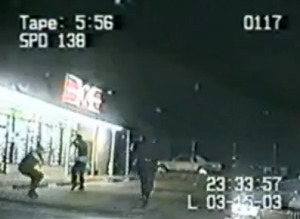 Paul Michel, an optometrist and reserve police officer with the Los Angeles Police Department, conducted a study on perception in low light. He took a group of police cadets with good vision and had them attempt to identify four objects in varying light conditions. The results were startling.
Paul Michel, an optometrist and reserve police officer with the Los Angeles Police Department, conducted a study on perception in low light. He took a group of police cadets with good vision and had them attempt to identify four objects in varying light conditions. The results were startling.
The recruits were not under stress, were relatively young, were all checked for good vision and were given a full second to make a determination on if an object was a threat. At the level of light equal to four times the light shed by a full moon, the cadets misidentified the object about 92% of the time. At 25 times the light cast by a full moon, these same cadets misidentified the the object about 69% of the time.
Think about how many times we navigate by moonlight, checking buildings or backyards. At 25 times that light level, young cadets who are not under any pressure are misidentifying threats more than two-thirds of the time.
How To Improve Threat Identification
There are relatively few ways to improve threat identification in low light. The most obvious is to bring more light to the party.
The use of flashlights, spotlights and headlights all help raise our ability to see and identify threats. This has to be balanced against the possibility that the light gives away our position or backlights one or more officers.
Interestingly, there are few confirmed reports of officers being shot because they were using a flashlight. That isn’t to say that it doesn’t happen; there just isn’t a lot of documentation to support the concern.
Since we know that BAR has a negative impact on our ability to see in the dark, stress inoculation would be a way to limit how severe the alarm response is, and therefore how much of an affect it will have on our vision.
Lastly, we must maintain healthy habits to prevent the negative impact of poor condition, nutrient deficiencies and tobacco use.
Aftermath
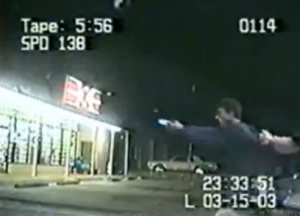 I started this article talking about an incident where an unarmed man was shot in the back by officers. The incident was real.
I started this article talking about an incident where an unarmed man was shot in the back by officers. The incident was real.
In March of 2003, Shreveport (LA) officers attempted a night time traffic stop on a vehicle operated by Marquis Hudspeth, which led officers on a five-mile pursuit. Just before the pursuit was terminated, Hudspeth pulled into the parking lot of a Circle K connivence store.
Hudspeth exited his vehicle, assumed a two-handed firing position and pointed what appeared to be a handgun at one of the officers who fired several ineffective shots. Two officers followed behind Hudspeth who began walking away.
Hudspeth again turned around pointing the gun at one of the officers before quickly turning his back to the officers again. This time, the officers began shooting until Hudspeth went down. Hudspeth was DOA, the “gun” he was pointing at officers was actually a cellphone.
The officers did the right thing. In similar circumstances, I would hope that all officers would make the same decision. However, the case is a perfect example of a mistake-of-fact shooting. Ultimately, the shooting was ruled reasonable by the department, local prosecutors and a federal court.
The Shreveport case is not isolated. Officers from my own agency recently shot and killed a robbery suspect who was unarmed, believing he held a pistol. The shooting happened at night, with little ambient light in a residential neighborhood. The pistol turned out to be a wallet.
Coupled with his threats to dispatchers to shoot responding officers and the way he pointed the wallet, the officers reasonably believed he was armed and posed an imminent threat to their lives. This too is a completely reasonable, but mistake-of-fact shooting.
The best we can all do is keep healthy and use light to our advantage.
Editor-in-Chief’s Note: Please join us in welcoming Richard Johnson as a contributor on ITS Tactical. Richard is a Police Officer with a mid-sized department in the Tampa Bay area. Richard also publishes the police training site, BlueSheepdog.com






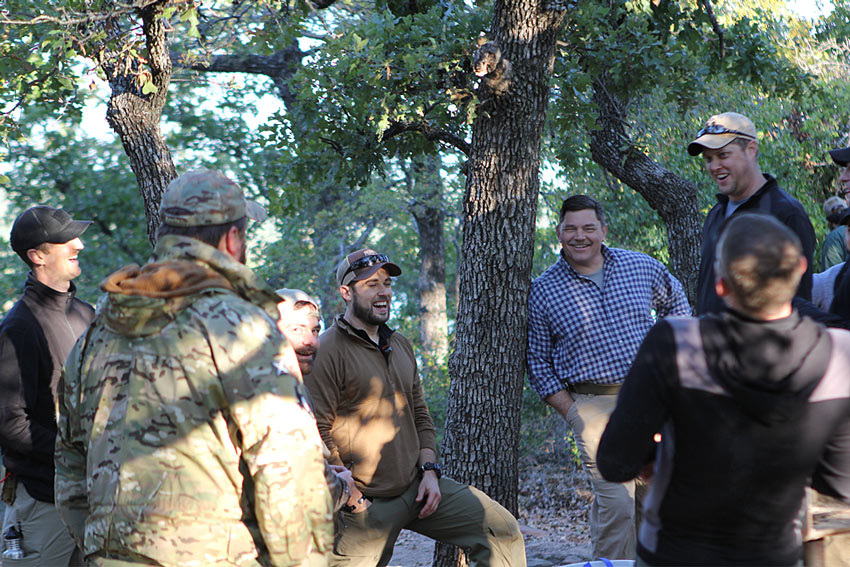

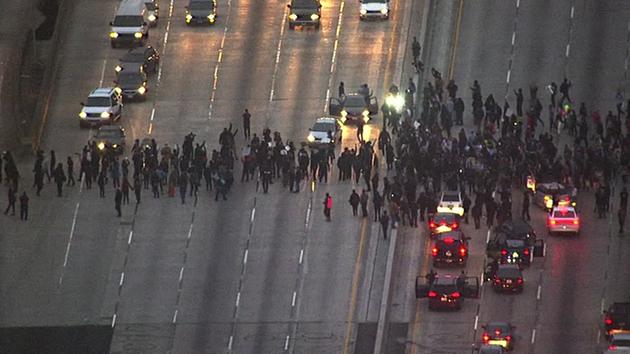
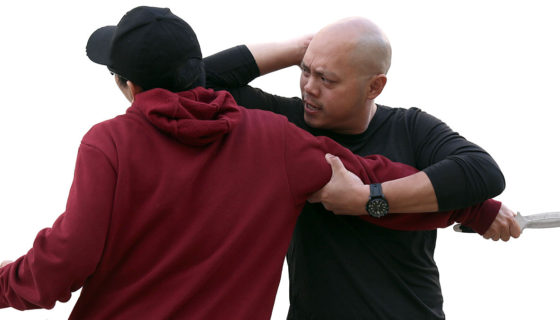

Discussion